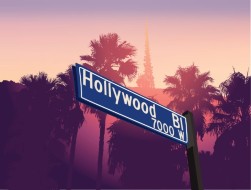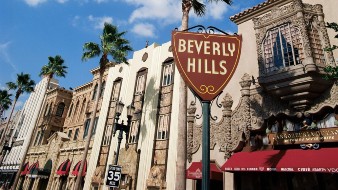California Stop, what are the rules
California is known for its wonderful beaches, Hollywood, Wine, Disneyland and many other great things but it is also may be known for another not so great thing. It may be known by many for what is called the “California Stop” or the “California Roll”. A California stop is normally brought up with a negative connotation, but what exactly a California stop is and what are the rules surrounding it will be discussed in this article.
A California stop occurs when a driver treats a stop sign as a yield sign and thus never comes to a complete stop but instead slows down and then keeps on rolling through. Despite being commonly known that many Californians do this doesn’t mean it is justifiable or legal to do so. The California Vehicle Code section 22450 states “The driver of any vehicle approaching a stop sign at the entrance to, or within, an intersection shall stop at a limit line, if marked, otherwise before entering the crosswalk on the near side of the intersection. If there is no limit line or cross walk, the driver shall stop at the entrance to the intersecting roadway”. However, this section doesn’t define what is considered a “stop”. A complete stop occurs when the speed is at zero and the vehicle isn’t moving forward at all. There is no set time frame outlined in the California Vehicle Code, however, many people use the “three-second rule” to ensure they have in fact came to a complete stop. If a driver doesn’t come to a complete stop but instead just slows to their speed then proceeds through the stop sign is running the stop sign and doing what is referred to as a “California stop”. Yielding is not permissible to do in place of coming to a complete stop but may be required in conjunction with coming to a complete stop as outlined in California Vehicle Code section 21802. California Vehicle Code section 21802 states “The driver of any vehicle approaching a stop sign at the entrance to, or within, an intersection shall stop as required by Section 22450. The driver shall then yield the right-of-way to any vehicles which have approached from another highway, or which are approaching so closely as to constitute an immediate hazard, and shall continue to yield the right-of-way to those vehicles until he or she can proceed when reasonable safety….this section does not apply where stop signs are erected upon all approaches to an intersection”.
When someone commits a “California stop” they are violating California Vehicle code section 22450 which is an infraction and can receive a ticket of about $238 and a possibly a point on their driving record with the DMV which can result in increased insurance rates. Traffic school is an option for those individuals who qualify to complete it and is recommended to avoid having points added to your driving record. However, going to traffic school is an additional cost an individual must pay on top of the fine for the traffic ticket. Receiving a ticket is never something anyone wants to happen since $238 is awfully expensive to save yourself a few seconds of time. Majority of people don’t think about challenging a violation of California Vehicle Code section 22450, let along consulting an attorney about such violation. However, there are some defenses which make challenging a violation possible. For example, the stop sign wasn’t visible at the time of the incident or present at all. The officer was wrong, and you did actually make a complete stop and he wrongfully cited you. Another defense is if the driver failed to come to a complete stop due to an emergency situation, it was unsafe to stop and necessary to roll through the stop sign to avoid a collision. In these instances, it may be worthwhile to consult with an attorney and determine if challenging the ticket is worth it based on all the facts and specific circumstances.
However, it is important to remember that having photos, videos, and other evidence to support the claims may be necessary to establish a strong defense in these types of cases.
However, the California stop may not be specifically about California after all. Many people say the same phrase but replaced with the state or area they live in. For example, some people say, “St. Louis Stop”, “New York Stop”, “Michigan Stop” or “New Orleans Stop”. So, it seems that treating stop signs casually and not coming to a complete stop is not something only Californians do but instead is done basically everywhere and the name of the rolling stop just changes based on the location you live in.
https://leginfo.legislature.ca.gov/faces/codes_displaySection.xhtml?lawCode=VEH§ionNum=22450
https://www.motherjones.com/kevin-drum/2015/10/was-california-stop-really-invented-california/







